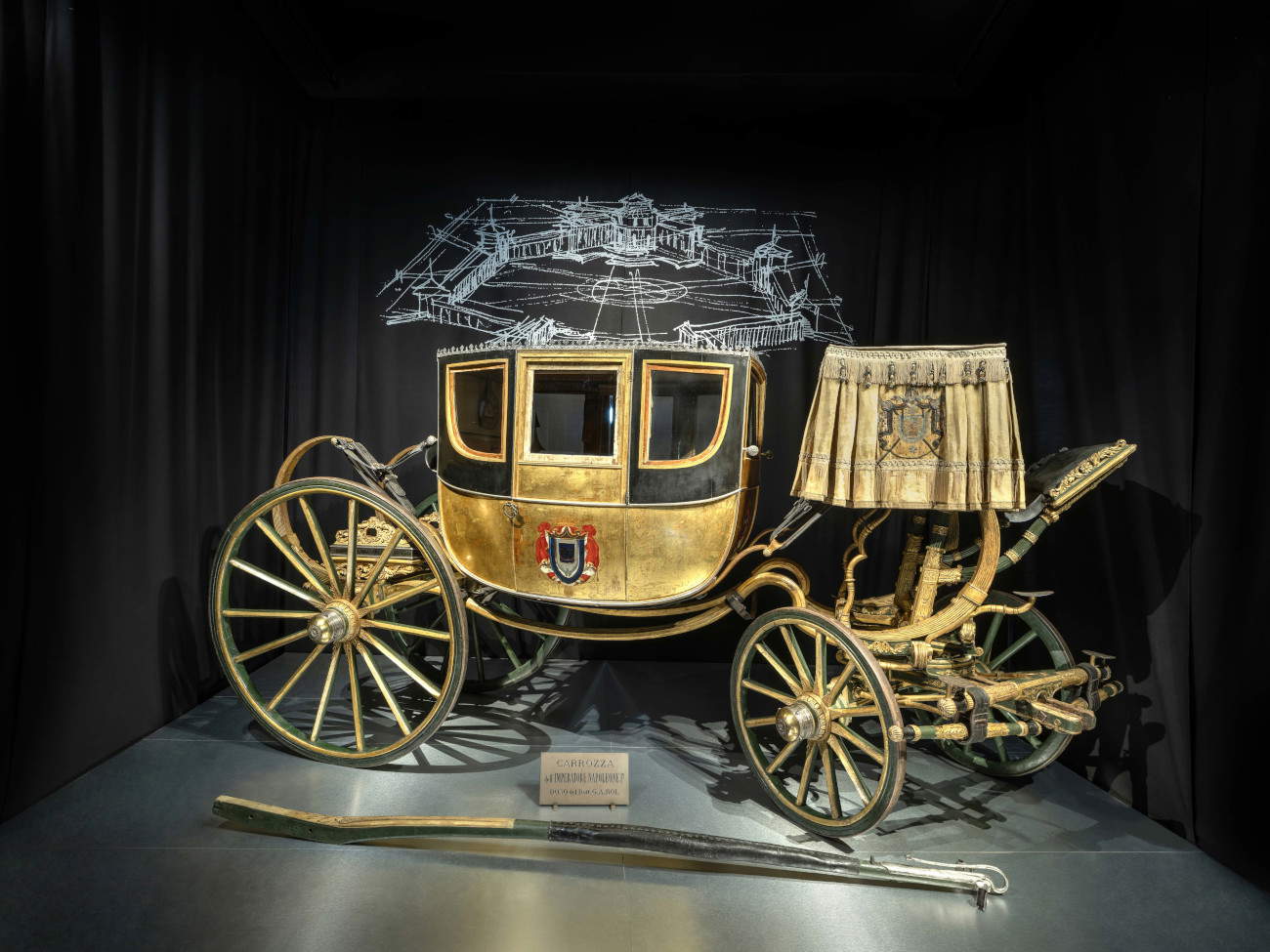The restored Napoleonic gala saloon carriage returns to the Palazzina di Caccia di Stupinigi. The carriage will be visible within the tour route from Friday, September 6. The artifact represents a historical testimony of the Napoleonic presence in Italy, which will also be told by two appointments organized by the FOM - Fondazione Ordine Mauriziano. On Sept. 15 at 3:45 p.m. is scheduled Life, snapshots of court life, the Living History event that evokes the daily life of a particular historical moment, when the Palazzina was the place of leisure of the imperial court of Napoleon (Ajaccio, 1769 - St. Helena Island, 1821) and his sister Paolina Borghese Bonaparte, giving visitors the opportunity to witness a slice of life reconstructed as faithfully as possible. On Oct. 17 at 4 p.m. there will be a guided tour by Alessia Giorda that will focus on the link between Napoleon and Piedmont, while the lecture to follow by Paolo Palumbo will tell the story of Camillo Borghese, consort of Napoleon’s most beautiful sister, and the imperial ceremonial at Stupinigi.
The gala saloon, a type of carriage very much in vogue in the early 19th century, was made around 1805-1810 by the Parisian coachbuilder Jean-Ernest-Auguste Getting, one of the main suppliers to Napoleon’s Imperial Stables. Richly decorated and finished, it was intended for gala processions and city outings. The carriage, which features the Napoleonic coat of arms on the doors, may have been part of the procession that took Napoleon to Milan in 1805 for his coronation as King of Italy, with a first intermediate stop at Stupinigi where he stayed with his wife Josephine. The saloon then passed to his second wife Maria Luigia of Austria, from 1816 duchess of Parma, Piacenza and Guastalla, as attested by the coat of arms replacing the original Napoleonic insignia. In 1845 the carriage was purchased by Antonio Delavo, a pharmacist with a passion for Napoleonic history, who included it in the museum dedicated to the Battle of Marengo set up in his villa. The imperial coat of arms painted over that of Maria Luigia to “re-napoleonize” the sedan probably dates from this era. In 1947 the sedan passed to Novi Ligure antiquarian Edilio Cavanna, who preserved it without special attention. In 1953 the psychic Gustavo Adolfo Rol, a lover of Napoleonic history, decided to buy the sedan and have it restored in Turin. Through the intervention of the Superintendent of Galleries for Piedmont Noemi Gabrielli, the carriage passed to the Mauritian Order in 1955 to be destined for the Palazzina di Caccia in Stupinigi. After new restoration in 2021 by the La Venaria Reale Conservation and Restoration Center, on the occasion of the 200th anniversary of Napoleon’s death, the saloon carriage was displayed for a period at the Reggia di Venaria before returning to Stupinigi.
The current restoration dealt scientifically with the study of the carriage, and the choice was to keep track of the succession of all phases of the work’s life: from the first decorative version to its musealization as a Napoleonic relic. The carriage features seven windows with retractable shutters and a gold background. The imperial eagle painted on the panels is surrounded by a frieze of small silver-plated copper flowers forming a gallery. A drum, a kind of small chest, used to store valuables, money, jewelry or firearms, also called an arsenal, protrudes from the back panel. Bronze handles with a brown patina in the shape of rings decorated with winged sphinxes, around crowned coats of arms bearing the Napoleonic N are used to open the carriage doors. Three steps covered in red morocco give access to the interior, elegantly finished in white satin and ivory velvet embellished with gold and azure trimmings. Light blue and gold are also the colors found in the interior decoration. The coachman’s seat, French style, is upholstered in ivory velvet on which the Napoleonic eagle is embroidered. At the rear, the stirrups’ top is supported by gilded wooden slats carved with scrolls and flourishes. Four large C-shaped springs and associated black leather brackets provide suspension for the case. The saloon has a fixed ramp with wrought and gilded iron tie rods, two crossbars with carved decoration, and a four-horse drawbar. Ernest-Auguste Getting’s signature appears on the four springs and swan necks of the two train arrows.
Hours: Tuesday to Friday 10 a.m. to 5:30 p.m.; Saturday, Sunday and holidays 10 a.m. to 6:30 p.m.
Admission: full 12 euros; reduced 8 euros
Photo by Dario Fusaro.
 |
| At the Palazzina di Caccia di Stupinigi, the restored Napoleonic gala saloon returns |
Warning: the translation into English of the original Italian article was created using automatic tools. We undertake to review all articles, but we do not guarantee the total absence of inaccuracies in the translation due to the program. You can find the original by clicking on the ITA button. If you find any mistake,please contact us.